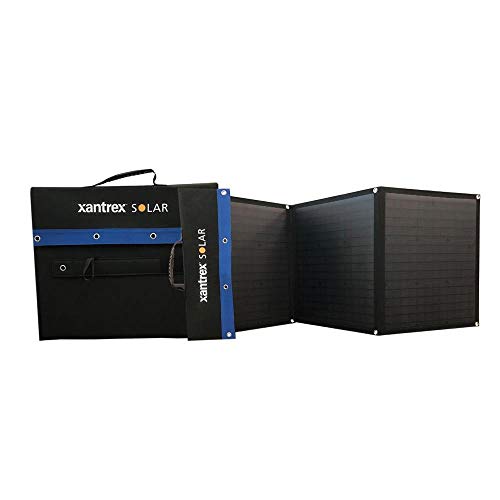I'm considering a 24v battery and I found two 24v panels that I plan on putting in parallel on the roof rack. I was going to go with two 12v in series but think it'll be more efficient to go with the 24v panels in parallel.
I also want to keep some folding panels in the van so when I'm parked in a place that allows for it, I can put them out on the ground or across my hood. There aren't many folding panel options to charge a 24v battery though. I'm now considering connecting two folding panels, each with 200w, in series. The panels I was looking have these specs: Open Circuit Voltage (Voc): 22.2V, Short Circuit Current (IOC): 12 A, Maximum Power Voltage (Vmp): 18 V, Maximum Power Current (Imp): 11A, Solar Energy Conversion Rate: 19%-22%.
I'm not sure how realistic that is though. Under normal conditions how tough will it be to keep the volts high enough to charge a 24v battery using two 200w folding panels? Also, I imagine they'll degrade and likely produce less output in a few years, could that mean that they'll no longer be able to charge a 24v battery? The folding panels will likely be on a mppt and the ones on the roof will likely be on a pwm but can switch that up if necessary.
After doing a lot of research I was convinced to go 24v but now that I'm putting together a list of things to buy and how to wire it up, I'm worried, since I can't have too much solar on/in a van, it'll be more difficult to provide power to the 24v as opposed to going with a 12v. Do you think I'll have more problems with my set up trying to charge 24v, than I would with a similar set up charging 12v? What do you think, should I stick with 24v or go with 12v?
Parallel should be better if you have shading.
The folding panel I bought was two 12v wired in parallel. It was easy to wire in series for 24v. Mine are not light though.
If your panels are wired for 24v, their max power is at 36v... so they will charge 24v batteries just fine. Use an MPPT though to get the most out of them. If you use PWM, the panels will operate at the battery voltage and be less efficient.
It is not really harder to provide power to 24v batteries, but there is little reason to do it either. Charge controllers are sized by amperage, and this is the max amps, so if you have 24v batteries this will be half vs 12v batteries. So you'd save a little money there in the controller. The other thing you might gain is if you have 24v appliances, where you can reduce the wire size. If you are converting 24v to use with 12v appliances you won't be saving anything, and rather have the cost and slight efficiency loss of the conversion.
I think sticking with 12v batteries makes more sense for a small system. Also 12v panels unless you want the ability to put them far from your rig. If you do want that ability then higher voltage panels make sense. You can mix 12v and 12v inputs, you just need a different controller for each. I'd only use MPPTs regardless, as PWM throws away too much and space is limited. Of course with PWM, your batteries and panels have to be the same voltage too, while with MPPT your panels can be higher voltage.
This is what I'm planning:
Two 24v panels... probably a 100W with a 10awg 100ft cord, and a 200W with a 10 awg 50ft cord. This is so I can put them in good spots, and can park in the shade if I want.
Both feed into a single MPPT controller. Max is 300W and my batteries are 12v, so 30a is enough. If I had batteries wired for 24v, 15a would be enough.
Two 100ah 12v LiFePO4 batteries, wired in parallel.
300W 12-19v converter for the laptop.
Little 12v-12v converter for the picky roof vent.
Lights run on 12v. So will the fridge if I decide to get one.
Little 12v-120v inverter for charging small battery packs that aren't worth the trouble to convert to use 12v.
Little 12v-usb converters.
Renogy 40a DC-DC charger for when the truck is running.


































































